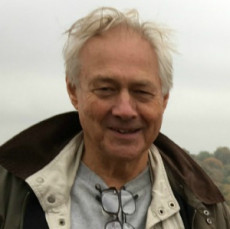Srebrenica, June 12: Pia and I stay in the hotel Misirlije on Petrica street in the north of the village. The hotel has the best restaurant in town, and is run by Abdula Purkovic, or “Dula” as he is popularly known.
Dula’s girth is a splendid advertisement for his profession. He taught cooking at the secondary school in Srebrenica for many years before the war, leading me to wonder how many restaurants in this ultra-nationalist part of the Bosnian Serb Republic are indebted to this former Muslim refugee.
Dula is solicitous towards his clients. The first night we are disappointed to learn that there is cheese burek on the menu, but not meat burek. (Burek is a popular local dish made with layers of pastry). Dula makes sure that a massive tray of meat burek is ready for our fare-well breakfast.
Dula is one of some 2,300 Bosniaks (Muslims) who have returned to the Srebrenica municipality, out of the pre-war population of 28,000. After almost ten years, this is fairly dismal, and we need to ask whether the international community has done enough to create the conditions for return.
The record is mixed. As soon as NATO became more visible in the area, in the late 1990s, security improved dramatically and attacks against returning Muslims effectively ceased. Throughout Bosnia, the international administration has also been vigorously enforcing property laws – something that we’ll explore in a future blog.
But there is no money for a comprehensive economic investment plan, and no signs of real political cooperation between local Serb and Muslim politicians. The international community has forced an inter-ethnic local government on Srebrenica by encouraging former Muslim inhabitants in Tuzla to cast absentee ballots in local elections, and this has produced a Muslim majority on the municipal council. But we are told that almost none of the Muslim councilors actually live in Srebrenica, which is hardly an incentive for others to return.

Master of the burek: Abdula Purkovic.
Ultimately, however, it is Bosnians like Dula, not the international community, who will decide whether or not Srebrenica can recover. Most of the returnees have gone back to villages around the town, where they are less likely to attract unfriendly attention. But returning to the town itself requires considerable nerve, as we learn from our translator, a delightful 17 year-old named Begzada Halilovic.
Begzada’s family lives near Dula’s restaurant in the upper reaches of the town. Begzada, her mother and brother left for Zagreb in 1992, but her father remained to fight through the siege. He was one of those who made it through the woods to safety in Tuzla.
Begzada is one of only twenty Muslim students in the Srebrenica secondary school. The other 610 are all Serb. The disparity in teachers is even more striking. Only one of the 55 teachers – Dula’s wife – is a Muslim. The corridors are lined with Christian paintings, and the curriculum is Serb.
This is so intimidating to Muslims that one wonders how the Japanese government had the nerve to put up the money for the rehabilitation of the school. It also raises a question: why, if the international community is serious about ethnic reintegration in Srebrenica, does it impose a multiethnic government on the place, but leave the schools to propagate Serb values and culture?
As we get to know her better, our young translator Begzada confesses that she “hates Serbs.” We press her on this and she becomes confused. She says that her Serb classmates are friendly in school and that she doesn’t hate them “as people,” but that she hates the “idea” of Serbs and what they have done.

Home again: Begzada Halilovic, 17 (left)
and Pia Schneider from AP.
This sort of abstract hatred exists on all sides in Bosnia. The real question is whether it will be given a chance to re-emerge in the sort of bloodletting that led to the Srebrenica massacre.
The Bosnian war does not – as some writers maintain – tell us that Bosnians like Begzada and her classmates are doomed to repeat their history, and that “ethnic hatred” is built into their DNA. But it does teach us that the most ethnically-integrated communities – like Srebrenica – can be torn apart by calculated policies of racism, unscrupulous politicians, international cowardice, economic pressures, dehumanizing propaganda, and a few select acts of cruelty. These were the forces that converged in 1991-1992. It will require hard work and constant vigilance, particularly from the international community, to ensure that they do not recur.
Pia leaves Srebrenica convinced that another war is inevitable. I think that working at Bosfam may change her mind. Bosfam was the first agency that brought Serb and Muslim women together in Srebrenica to knit sweaters for children. All of the knitters had been uprooted and all no doubt felt the same abstract hatred as Begzada. But they also found that they had other things in common, as women, mothers and wives.
They, however, are older women. The real challenge lies with the next generation. Begzada avoids socializing with Serb girls or boys in Srebrenica and she cannot wait to spend next weekend in Tuzla with her boyfriend. Once she finishes school she wants to leave Srebrenica.
Who can blame her? Right now there is nothing here to hold her, except her family. Yet without the vitality of youth, the embers of reconstruction, already barely aglow, will be completely extinguished.
Posted By Iain Guest
Posted Jun 12th, 2004

